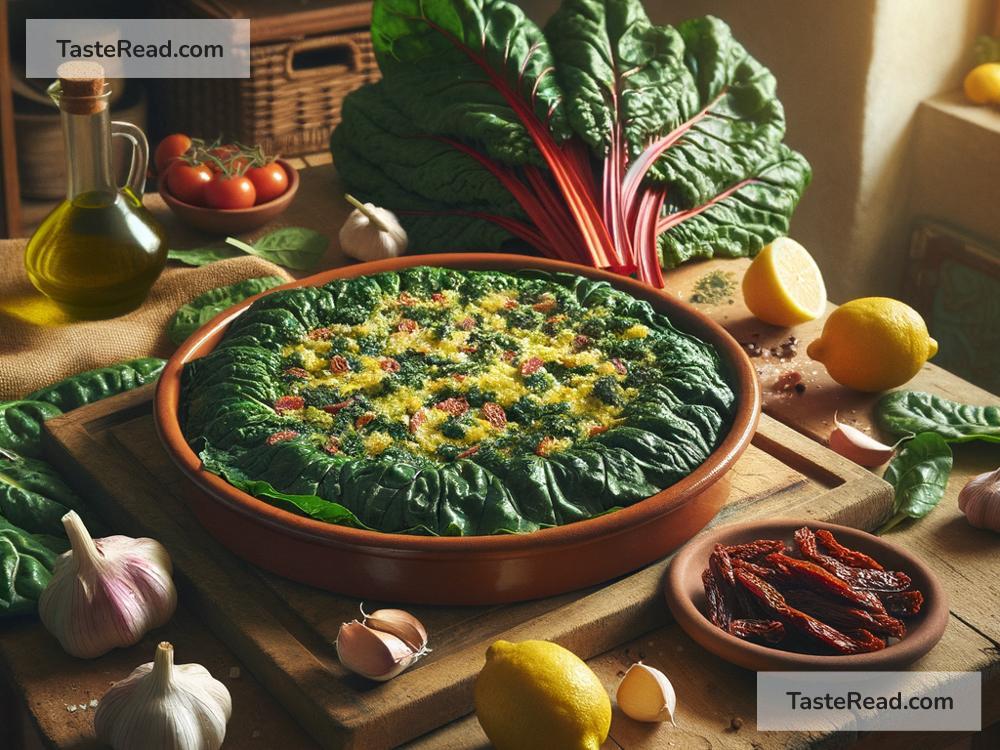The Surprising Uses of Swiss Chard in Mediterranean Cooking
Swiss chard is a leafy green vegetable that doesn’t get as much attention as kale or spinach, but it deserves a place in the spotlight. With its vibrant colors, mild taste, and tender texture, Swiss chard is a versatile ingredient in Mediterranean cooking. Many Mediterranean households use this vegetable in ways that might surprise you. Whether you’re looking for fresh salad ideas, hearty cooked dishes, or a creative way to wrap food, Swiss chard has got you covered. Let’s explore some surprising uses of Swiss chard and how it has become a star in the Mediterranean kitchen.
What Is Swiss Chard?
Swiss chard is a member of the beet family, and it’s grown for its large green leaves and colorful stems. Its stems can range in color from white to yellow, pink, and bright red, which adds a cheerful splash to any dish. Swiss chard is packed with nutrients like vitamins A, C, and K, as well as iron and magnesium. It’s also low in calories, making it a healthy addition to your meals.
Although commonly associated with Swiss cuisine, Swiss chard is widely used in Mediterranean cooking, where it’s known for its versatility and ability to absorb the flavors of herbs, spices, and oils.
Swiss Chard as a Salad Base
Most people think of spinach or arugula when making salads, but Swiss chard is an excellent alternative. In Mediterranean salads, its crisp leaves are often paired with fresh ingredients like tomatoes, cucumbers, olives, and feta cheese. The key is to use young, tender chard leaves to avoid bitterness.
Drizzle your salad with olive oil, lemon juice, and a sprinkle of oregano for a simple, traditional Mediterranean dressing. This light dish can serve as a starter, side, or even a main meal on hot summer days.
Use Swiss Chard as a Wrap
Did you know that Swiss chard leaves can replace grape leaves or tortillas as a wrap? In Mediterranean cooking, chard is often used to make stuffed wraps, similar to dolmas (stuffed grape leaves). The large, pliable leaves are perfect for folding around a variety of fillings.
You can stuff them with a mixture of rice, minced meat, herbs, and spices—or keep it vegetarian with a blend of lentils, chickpeas, and vegetables. After stuffing, the wraps are usually cooked in a tomato sauce or broth to soften the leaves and infuse flavor.
Swiss Chard in Soups and Stews
Another surprising way to use Swiss chard is in hearty Mediterranean soups and stews. Its sturdy leaves hold up well to long cooking times, making them ideal for slow-cooked meals.
In Greece, for example, chard is added to lentil soups along with garlic, onions, tomatoes, and olive oil. In Italy, you’ll find it simmering in minestrone soup or hearty bean stews. The mild flavor of chard complements ingredients like chickpeas, potatoes, and squash, adding a boost of nutrients to the dish.
Sautéed Swiss Chard for Side Dishes
Sautéing Swiss chard is one of the simplest ways to enjoy it. In Mediterranean cuisine, it’s often prepared with garlic, olive oil, and a pinch of chili flakes. The leaves wilt beautifully when cooked, and the stems become tender and flavorful.
This dish is a quick side that pairs perfectly with grilled fish, roasted lamb, or falafel. Adding lemon juice or Parmesan cheese at the end brings a touch of zest or creaminess, making it even more delicious.
Chard in Pasta Dishes
If you’re a pasta lover, Swiss chard can add a Mediterranean twist to your favorite recipes. In dishes like Italian ravioli or Sicilian pasta with greens, Swiss chard brings color and flavor to simple meals.
Chop the leaves and stems, sauté them with garlic and olive oil, and mix them with cooked pasta. For extra richness, add ricotta cheese or sprinkle freshly grated pecorino on top. Swiss chard also works great in filled pasta like lasagna or cannelloni, often combined with ricotta and herbs for a creamy, earthy filling.
Add Swiss Chard to Pies
Mediterranean cooking often involves savory pies, and Swiss chard makes a fantastic filling. In Turkey, the plant is used in “börek,” a flaky pastry filled with greens, cheese, and spices. Similarly, in Greece, Swiss chard can take the place of spinach in “spanakopita,” the famous spinach pie made with phyllo dough.
The slightly sweet and earthy taste of Swiss chard complements feta and other soft cheeses, and its tenderness creates a filling that’s flavorful and decadent.
Swiss Chard Beyond the Kitchen
Mediterranean cooks don’t let Swiss chard go to waste, and even the stems are used creatively. Brightly colored chard stems can be pickled and served as a tangy snack or garnish. They can also be chopped, sautéed, or roasted alongside other vegetables.
Swiss chard’s versatility has made it a staple in Mediterranean kitchens, and its uses extend far beyond what most people expect. From salads and wraps to pies and stews, this humble leafy green can transform traditional recipes with its unique texture and mild flavor.
If you’ve never cooked with Swiss chard before, give it a try. With so many ways to use it, you’re bound to find a recipe that becomes a new favorite. And the best part? You’ll be eating healthy without sacrificing flavor!
Swiss chard may not be the flashiest vegetable, but in Mediterranean cuisine, it’s a true star. Next time you’re whipping up a meal, consider adding this hidden gem to your ingredient list—you just might be surprised by what it can do!


